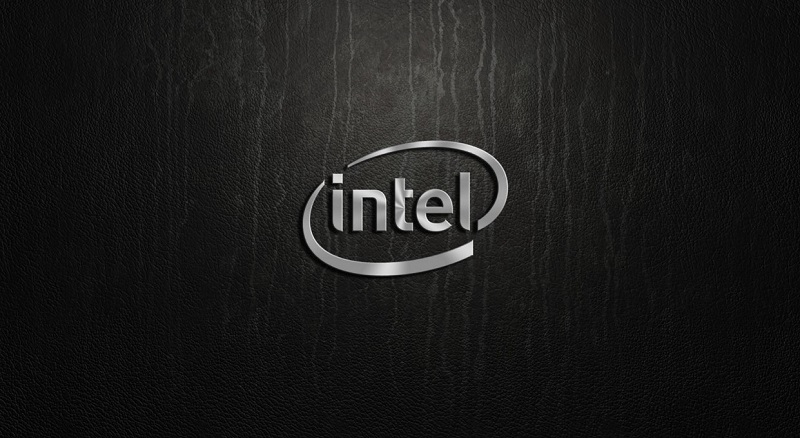If anyone has read ‘The Intel Trinity’ will know by heart the story of the eight traitors and how that event led to the gestation of the company that dominated the semiconductor company for the next five decades. In that story, as in many others, there is a good (Bob Noyce), ugly (Gordon Moore) and bad (Andy Grove), and the funny thing is that only one of them, “ugly”, I could see really future. And that future was in microprocessors.
That was in the early 70. After several years growing thanks to them, the memories business was no longer profitable, so Grove decided to go for a segment to which almost no one paid attention. Microprocessors, he said, could be the future. He was right, of course, and that led Intel to lead a market that would escape 20 years later. Otellini was at a crossroads similar ways, but confided. Mobile devices were not competitive, he thought. That decision has cost a lot to this company. Among other things, has just announced the dismissal of 12,000 employees over the next 12 months.

A bet that went really well
Andy Grove – recently deceased – is considered by many as the best CEO of a technology company in history. Even place it above Steve Jobs, for example, which by the way, had as one of its mentores- and arguments are clear. Grove also had a peculiar style of managing Intel, but what is clear is that if you have to blame someone Intel’s success in the last quarter of the last century, is to Grove.
Grove he not founded Intel, but as something disappointing accounts that book in my opinion – yes was the first official employee of the company. Although Bob Noyce had their particular “distortion field” -was a natural leader, they say those who worked for him and conocieron- and Gordon Moore was a brilliant engineer ‘ It’s been the history for his famous law – Grove was a leader made itself and it was very clear what he wanted and where he should go the company. As he explained in his book ” Only the paranoid survive”:
We tried a lot of things. We try to focus on niche market segment memories, trying to create special-purpose memories called value-added designs; we introduce more advanced technologies and develop memories. What we tried to do was enter desperately extra for our product in the market because we could not compete with the spiral of falling prices in the Japanese market.
Grove Maybe I just got lucky. The circumstances were different, of course. The Japanese had become too fierce a competitor in the field of memories that Intel had mastered over the years, and it was clear that his future was committed in that market. Stagnate was suicide, so Grove moved all the microprocessors, a segment in diapers had not even proved its worth in a time when those chips were meant to calculators or computers targeted at scientists, military or academic environments.
Microcomputers began to emerge, and that was when Grove’s performance was strategic to get the agreement with IBM that would make your business in absolute benchmark in a market where he had worked for over a decade. The memories had remained mainstay of its business, but it was clear that Intel 4004 – the first monolithic processor history- change the fate of Intel … and our world.
That marked the definitive takeoff of desktop computing and the “PC era” that accompanied us for decades. And then came Apple, which in 2007 showed that the world had changed, and with it, the way we manage it. It was now smartphone, and Intel had missed the opportunity to also dominate that segment.
The biggest mistake in the history of Intel
Apple had already signed an agreement with Intel for its processors were the basis of their new teams. The PowerPC era was over, and Apple had the wisdom to make the leap to the x86 architecture that had much more sense in the future.
-for That what they say Grove alliance was crucial to reach this agreement with Jobs- marked a new success for Intel, which was offered to be part of a new era in the iPhone. Otellini decided that this did not compensate:
We ended up not earn or spend it, depending on how you want to see it. And the world could have been totally different if we had done. What you need to remember is that this decision was made before the iPhone was submitted and no one knew what the iPhone would … In the end all we knew is that they were interested in a chip and wanted to pay a certain price for it, but not a penny more, and that price was below our estimated costs. I could not see it. It was one of those things you could do in volume. A posterior the estimated cost was wrong, and the volume was 100 times higher than anyone imagined.
In hindsight it is clear that that was the biggest mistake in the history of Intel, but the truth is that any position in Intel probably would have hesitated much to step it was like jumping into the void. The situation was completely different: the PC market did nothing but grow and the company dominated with solvency in an area that seemed to be here to stay. Why risk and lose money when mobile existing in the market were no big deal?
You may also like to read another article on TheKindle3Books: The Intel Core i7-6950x will have 10 cores: Who needs them?
The problem of not hitting with crystal ball
Intel realized his error as it appeared the iPhone, of course. The company had sold XScale in 2006, the division produced its ARM chips, and he was thinking actually based processors with ARM architecture had no future. Those buses had been used in very few products (some Pocket PCs) and basically was a division in which the money was slipping hands.
So they closed that chapter and now, became a big head. It offered ARM was not comparable to the advantages of their micros x86, said some minor Intel executives who then had to eat their words. Specifically, it’s Atom, which began trying to conquer the market in some devices based on Windows Mobile, Moblin -that operating system in 2011 wanted to make the leap to smartphones and that would result in MeeGo- or Android.
The truth is that ARM designs were making it clear that his career from the bottom up was much more consistent mobile devices. Those first micros focused on efficiency, a parameter in which the Intel Atom could not compete until much later. Later designs of ARM were winning performance without compromising power, and that made among other things Intel also lost other agreements that could have given rise in that market: the iPad also passed the Atom Silverthorne family, they seemed best suited for such devices.
That was an important price for Intel, it is estimated that lost 7.000 billion dollars in the form of subsidies to make tablets manufacturers “cheap” set up their Intel Atom instead of ARM chips from other manufacturers. Otellini had to relax his optimism in the market for tablets, for which it was also clear that the battle seemed lost.
The “post-PC era” may be a farce, but not for Intel
Many of us do not believe that we are at the Post-PC era. We are simply facing a new paradigm in which the PC is for many people the PC desktop, but your smartphone or tablet. The problem is that the post-PC era itself that has severely affected Intel, which made a huge depositing all their hopes in a segment that mistake still decelerating.
That has had another fatal consequence: the announcement yesterday in which the company revealed that in the next 12 months would cut its workforce by 11% .That means Intel 12000 employees worldwide cease to be in mid-2017.
Intel’s strategy is now a picture of what is happening in the market: it departs significantly from its traditional focus of attention, the PC and laptop lifetime, and focuses on giving benefits -CPUs for machines data- centers and what could give them (Internet of Things).
It is difficult to know whether that bet on the Internet of Things gives the result expected by Intel, but the truth is that the company again at a crossroads. Brian Krzanich, CEO of the company, is not in an easy position, and now remains to be seen whether the uncertainty surrounding the hyper future favors or not a company that managed to hit about the future but then was wrong. What will touch this time?

